Sarah Richardson puts the arguments in favour of continuing the drive to renew every school in the country
It’s easy to take a guess at where these photos were taken. A lot of them show narrow corridors in an industrial building, possibly leading to a subterranean plant room. In some, the woodgrain formica suggests a minicab office. The blackened brickwork that frames a cracked glass door must be in a sink estate, and the concrete stairwell with its filthy carpeting and cheerless brick walls is obviously from the same place. The bathrooms are part of a detention facility of some sort. The common factor in all these photos is the lack of daylight; all of these locations are dark, all are depressing. And, in fact, all show secondary schools in the east Midlands.
Paul Finch, the chairman of Cabe, has spread them out on a cafe table. “Look at this. And this, and this,” he says. “These are schools, for God’s sake.” It’s difficult to believe that any parent with the money to choose would send their precious 11 year old to these places: the subtext to these photos is that, in the words of Jarvis Cocker, the future that they’ve got mapped out is nothing much to shout about. These are the schools that were allowed to fall apart in the eighties and nineties, and were to be replaced by the Labour party – a decision made in the three years between Tony Blair’s second landslide and the invasion of Iraq, when all things were possible. Sadly, if the inevitable cuts in public expenditure hit Building Schools for the Future (BSF), it could be decades before that promise is kept.
Finch points out that there are hundreds more schools in the same position as the ones in his photos: 54 local authorities – roughly a third of councils in the UK – have yet to enter the £55bn Building Schools for the Future (BSF) programme, leaving at least 2,500 schools that have had no investment from the scheme. On top of that, there are thousands of primary schools that have yet to receive any government cash.
If public spending on capital projects were halved across the board, the cost to construction in the education sector would be about £3bn a year. But, as Finch and other experts point out, the overall cost to Britain’s economy would be greater. The crucial thing is to make sure that the government appreciates this, which is the starting point for Building’s 284 campaign.
Do good schools improve standards?
The government’s drive to renew the entire school estate has attracted a great deal of criticism on a great many grounds. The most serious charge is that there is little evidence to link the renewal of buildings with educational attainment. However, as more schools are completed under the BSF programme, that evidence is accumulating.
For example, Westminster academy, designed by Allford Hall Monaghan Morris, has more than tripled the number of pupils who achieve five A*-C grades at GCSE since it moved into its £25m new building in September 2007. This year, every single one of its sixth formers gained a university place. More generally, research by LEK Consulting, commissioned by the UK Contractors Group, showed that in newly built schools, the uplift in the proportion of students achieving five or more A*-C GCSEs can be up to 15%, while Partnerships for Schools (PfS) has calculated that exam results in BSF schools in 2008 improved by an average of 10% over the previous year, compared with a national average of 2.4%.
Steven Higgins, professor of education at Durham university, says there is no doubt that poor buildings contribute to poor results. “The extremes are clearly detrimental, in terms of noise, light, air quality, heat and cold. The debate is about what happens once certain standards are reached.”
One link between the design of a school and the performance of its pupils is easy to establish: bullying. A child who is bullied finds it much harder to do well academically than one who isn’t, and older schools are more bully-friendly than those designed with the problem in mind – all those narrow corridors, dead ends and intimidating toilet blocks. The National Foundation for Educational Research carried out a study at Bristol Brunel academy, which opened in 2007; this showed that the number of pupils who said bullying was an issue for them has dropped by 23% compared with the school it replaced. Vandalism has dropped by 51%, and the number of pupils who say they “feel safe” has risen by 30%.
Another benefit of investing in schools is that good buildings attract good teachers. “We don’t see any conflict between investing in teachers and the buildings in which they work,” says Finch, alluding to the temptation for governments to cut capital works rather than teachers’ pay. “If good teachers have a choice between a good school building and a bad one, there will be some who will see the bad as a challenge to take up, but most will opt for a nice place. Good buildings tend to attract more and better qualified people to work and they stay there longer.” Of course in the shorter term this will benefit the upgraded schools at the expense of the rest, but that should be a transitory cost as the programme unrolls. The ultimate benefit, of course, would be to improve the status, and therefore the quality, of the teaching profession as a whole.
How well designed are new schools?
Another charge that has been made in the past is that some BSF schools are not much better than the ones they replaced. In the early days of the programme, there may have been some truth in that – the contractor-led consortiums that undertake design-and-build PFI work have never gained an international reputation for their architecture; indeed, Cabe felt the need to introduce a schools design review panel in 2006, the first time any PFI programme had been subjected to such close design scrutiny. This was reinforced last year by the government’s publication of minimum design standards.
“We didn’t want this school construction programme to be a massive missed opportunity,” Finch says. The impact is tangible: as of November last year, 73% of schemes returning to the schools design panel between the initial and bid stages had showed improvement based on Cabe’s 10-point scoring system. “With the education department and Partnerships for Schools I think we’ve changed the weather for the better,” says Finch. “And given the demonstrable benefits, it makes it even worse to contemplate this programme being wound down.”
Economic benefits
The higher educational attainment associated with better school buildings has, as you would expect, knock-on effects for the economy. LEK estimates that £1 invested in school construction can generate an additional £1-2 for the UK in the long term (see box, page 37). With the benefits for construction, this results in an economic multiplier of £5.04 over a 30-year period.
The other big win for the economy comes from the impact of school improvements on carbon emissions. The school estate in England is responsible for 15% of its public sector emissions, and if the government is to reduce national carbon emissions 80% by 2050, schools must be part of the solution. Finch says: “They’re everywhere, and if you’re not careful they can use up a lot of energy.”
The equality argument
If you accept that there is a link between pupil performance and the condition of school estates, it follows that government is under a moral obligation to offer all pupils equal improvements in their life chances.
The state school system has historically been a lottery fixed in favour of the more prosperous parts of the country, and this has meant that improved social mobility, one of the aims of comprehensive education, and of the Labour party, simply hasn’t happened. Poor schools are attended by poor pupils, and they stay poor.
Finch says: “There are 54 authorities that haven’t had any benefit from BSF so far. That’s a lot. It’s not reasonable for children in those schools to spend one or two decades in significantly worse buildings than those in areas where BSF has taken hold. Even in these hard times, schools are important buildings. They are about future generations. Which parents is it you’re going to tell: ‘Sorry, but it’s going to be a bit tough for your kids?’”
In this case, political advantage buttresses the moral argument. Local politicians, of whatever kind, are going to have a tough time explaining to constituents that their schools are going to continue to resemble rundown detention centres. And interestingly, given the likely outcome of a general election, most authorities still awaiting investment are in Conservative-controlled councils.
“It has a tremendous emotional tug, and for good reasons,” says Finch. “It’s a big chunk of children’s lives that’s spent at school, and especially for a child who isn’t from a good home, it can be an environmental escape. How depressing to spend 12 years of your life in a poor quality home and a poor quality school. We say that’s not reasonable.”
The moral obligation to include all children in the programme also applies to students with a physical disability. “Most of these buildings just don’t comply with today’s standards,” says Finch, referring to the Disability Discrimination Act.
Should we cut back?
At present, more than £6bn a year is being spent on school buildings; this is an unprecedented figure, and a huge effort to secure the UK’s position as a post-industrial knowledge economy. Unfortunately, a figure that large presents a tempting target for Treasury axemen, but Finch warns that anything beyond a minimal reduction could be a false economy.
He is particularly hostile to the effect that a reduction would have on individual schemes. “I think that the idea of achieving efficiency savings in buildings that are in severe need … well, there aren’t any. They’d prevent schools functioning properly,” he says bluntly. He acknowledges that initiatives such as standardisation and a more efficient procurement process could cut costs, but says that these are unlikely to be substantial. “Standardisation may be possible, but when that was last tried in the sixties and seventies it was not conspicuously successful. You could achieve savings but it will require a greater degree of central control.”
There will undoubtedly be a greater emphasis on refurbishment in the future. The Conservative party’s still unpublished green paper on planning talks about making it easier to turn other buildings into schools, as has been done in Scandinavia. Finch says this should not lead politicians to believe that cutting the capital budget would have less serious consequences. “If you can improve a school without demolition and refurbishment then good. But the important thing to point out is that it still involves capital expenditure, and possibly decanting children. It’s a big job.”
The other concern Finch has with cuts is that design quality is prone to fall, undoing much of the progress made so far. “Our concern is that in straitened times you get siren voices saying let’s not worry about quality but quantity. But having got to a place where we have a decent minimum design standard that is setting a benchmark which could be used in other areas of public buildings, we’re obviously protective of it.”
Why the programme can be sustained
Some schools will have a more pressing need for cash than others, whether they are primary or secondary. Finch says: “Certain building types from the post-war era are energy inefficient and with mean space standards – because, then as now, they were built during times of economic restraint. First you survey, and then you make choices.”
But he argues that BSF should be a relatively easy programme to fund, even during times of hardship. This is because about 40% of the money comes from the PFI, and this means that there is an established way for commercial institutions to invest in education. He says: “The point about capital expenditure is that that is what the PFI is meant to take care of. PFI was the reason we could undertake this in the first place. One of its virtues is that, as with a mortgage, you get the house today and not in 25 years.”
When the recession was at its deepest, the number of investors prepared to stay in the education market was reduced to a handful. By last autumn, however, there were 20 in the market that were willing to lend to BSF projects, according to PfS. Chris Hearn, national head of education at Barclays Bank, told Westminster Education Forum this month: “Education has a stable business model and will continue to do so. It’s low geared, with a strong asset base.”
Finch says this should make the government’s decision easier. “There clearly is a choice to be made, but there is likely to be as much pressure to continue these programmes as to abandon them. Why pick on the children? We have a particular responsibility towards them, as they can’t take care of these things for themselves.”
What £1 gets you these days: The economic case for investing in schools
Charter 284 is based on a report by economic consultant LEK that estimated that £1 of investment in building a school generates £2.84 in additional economic output. This is how it arrived at the figure …
First, the £1 spent on construction naturally becomes £1 of output for the construction industry.
But that £1 doesn’t disappear after it’s handed over to the main contractor. Rather it is parceled up and passed on to workers and suppliers, where it becomes additional income for them. Some of that additional income will then be spent on further products and services. LEK puts the indirect effect of the initial £1 expenditure at £1.09.
The third effect of the £1 is within workers’ households. Much of that money eventually finds its way into household budgets in the form of wages, where most of it is used to buy general commodities and services. This “induced” impact is valued at 75p.
So: £1 + £1.09 + 75p = £2.84
But we also have to consider what effect the finished product will have on the general economy. In this example that is a school, and as its product is a socialised and educated worker, what it does will certainly affect the British economy in the longer term.
LEK estimates that the economic return on educating a child is somewhere between £1.03 and £2.20. That is based on the assumption that, over their lifetime, a person who gets five or more good GCSEs earns 10-23% more than one who doesn’t – with all that that implies for what they pay in taxes and don’t claim in benefits.
During the construction process, some of the spending on wages will find its way back to the Treasury, as, for example, income tax and National Insurance. LEK’s model puts a value of 56p on that effect. This means the net government investment is £1 – 56p = 44p.
So the final estimate of the return on 44p over a 30-year period is between £3.87 and £5.04. QED.
The industry shows its support

Graham Watts, chief executive, Construction Industry Council
The most important thing is to maintain spending in programmes like the schools programme. After a lot of teething problems government and industry have now got it right.

Bob Rendell, chief executive, Leadbitter
Education is such an important part of the UK. Without it, UK plc would not be able to compete in the 21st century. It’s fundamental to have children that are properly motivated to excel, and first rate educational facilities motivate children, teachers and parents. The education process that we can be involved in starts before the construction of a new school takes place – the construction process itself can bring teachers, parents and students together in a way that perhaps they weren’t before. Education in the UK has to be put at the forefront of whatever reduced public spending there is, as it is about the future.

Philip Watson, design director, Atkins
Existing and future government should make the renewal of the schools estate its number one priority. If we are to address the widening gap between rich and poor and tackle child poverty in particular, then we need to break the self-perpetuating cycle of disenchantment with schools that is the norm for many young people. We have to make schools places where young people want to be, where learning is prized and where aspirations can be raised. The quality of school buildings speaks volumes to children about how much they are valued and our existing estate is woefully inadequate.

Stephen Ratcliffe, chief executive, UKCG
What could be more important to the UK’s economy than a well educated workforce? Given the importance that other nations, such as China, attach to it we need to be continually raising our game. There is now lots of evidence to show that the new schools programme is having a real impact on educational achievement. And this impact will be long lasting. To stop now would be so short-sighted. This area of public sector investment must be protected to secure the nation’s long-term prosperity.

Richard Steer, senior partner, Gleeds
Tony Blair supported by Gordon Brown used to argue that three things mattered most to the Labour party – education, education and education. For the current and any future government there are good social as well as commercial reasons to support the complete renewal of the school estate. First, there has never been a better time to build. Our industry is keen to work, competitively priced and we have the experience of a decade of school building behind us. To take a macro view, the UK is also no longer a manufacturing economy: therefore, to have an educated, skilled workforce is vital. School is where this process begins. The complete renewal of the school estate is the ultimate investment in the future prospects of UK plc. Without it we could be doomed not just as an industry but as a country competing in the global economy.

Paul Finch, chairman, Cabe
If you look at this in the round – the impact of good school design on performance and pupil behaviour, the improvements made to the programme, the principle of equality and the involvement of private finance – there is a really strong case for not settling for second best.
And on top of that, schools are increasingly becoming community facilities rather than 9-5 education outlets. Activities in and around schools are localism at work. We need to give equal treatment to those authorities yet to benefit.
Join charter 284!

Ty Goddard, chief executive of the British Council for School Environments, argues that criticism of the school programme to date should not detract from the need for investment, and urges industry and schools to get behind the campaign.
This is an absolutely vital time. This investment has made a difference, and we really can’t afford to go back to not spending money consistently on infrastructure.
The sheer scale of this investment is hard to absorb for many people, and it’s been ill-served by some of the “research” flying around. The Great Schools Commission [a cross-party group set up by the BCSE and chaired by former education secretary Estelle Morris] is looking at an evidence base in the UK and abroad that says this matters. It’s not about crude research expecting attainment to rise instantly. But when you see new and refurbished buildings that are understood by teachers and learners, and designed to support what the school is, then I think the argument is pretty conclusive.
I recently met Mr Castle, the assistant head of Elm Green school in Lambeth. He had taught in six schools across London, and spoke of the difference that this majestic building is making. He said the building allows the staff to teach, it doesn’t get in the way. They can use double-sized classrooms when they need to, and small ones for quiet work. They have an amazing space called the market square for recreation. It’s making a difference to how he and his fellow teachers feel about teaching.
We’ve got to get our house in order, as we cannot justify the costs that have been associated with the Building Schools for the Future scheme. But the costs are different from the investment. We need different approaches to procurement. And I think we need a national advisory council at the heart of government that can talk directly about school investment to the secretary of state. Quangos like Partnerships for Schools, by their very nature, are not best placed to explain or defend investment to a wider audience.
I’m clear that whatever school system you have, it needs good environments. We’ve got to make the arguments: it’s about the achievements and outcomes for young people, and about jobs. You look around the world and other countries are investing in infrastructure, so it’s also about UK plc. And we should appreciate the skills that we have taken years to build up in design, construction and the supply chain.
Investment on this scale hasn’t just happened because someone waved a magic wand. We had to make a case, and we have to again, with and around other public spending priorities. I was recently at the Conservatives’ education policy launch, in a fantastic academy in Walworth. They wouldn’t have launched it in an allotment shed, would they? I think that we need to communicate to both front benches that this investment matters. And we can’t do it on our own.

You can register your support for Charter 284 at www.building.co.uk/charter284.
Postscript
For more debate on school environments, join our BSEC conference. Details at www.buildingschools.co.uk.




















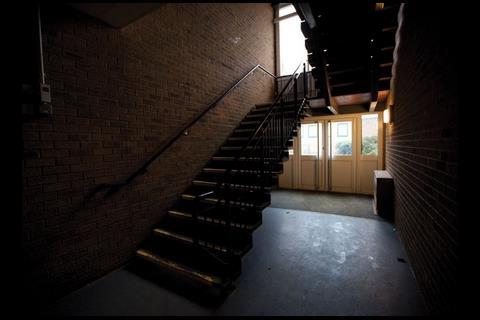
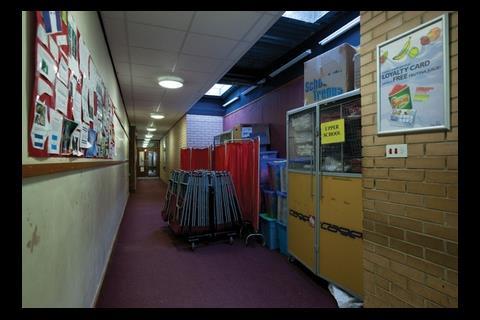

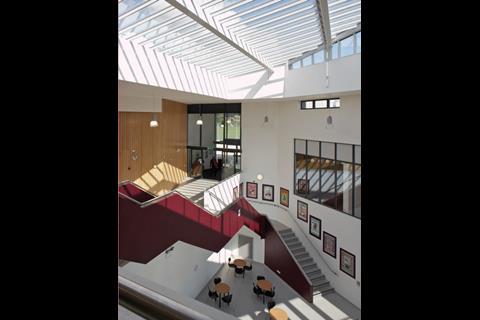

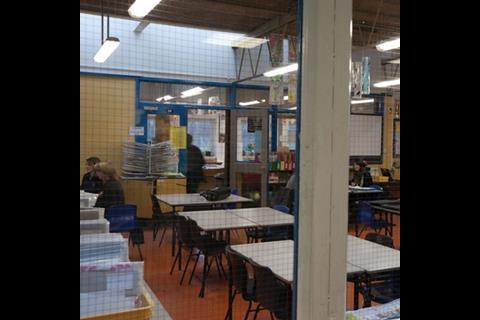

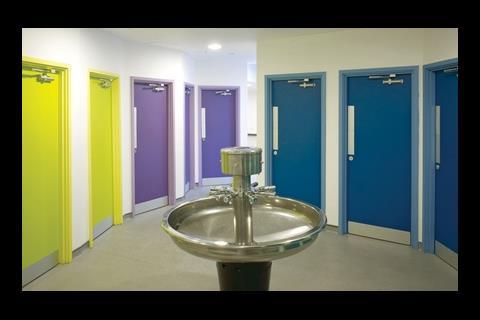
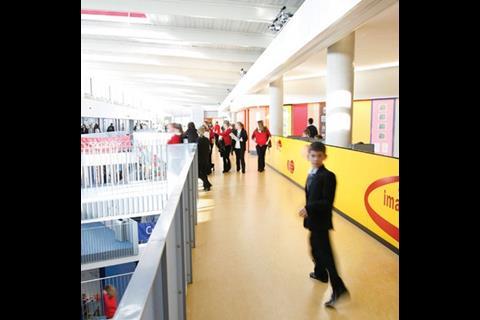
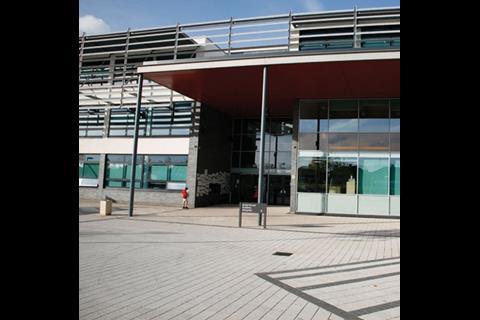















1 Readers' comment